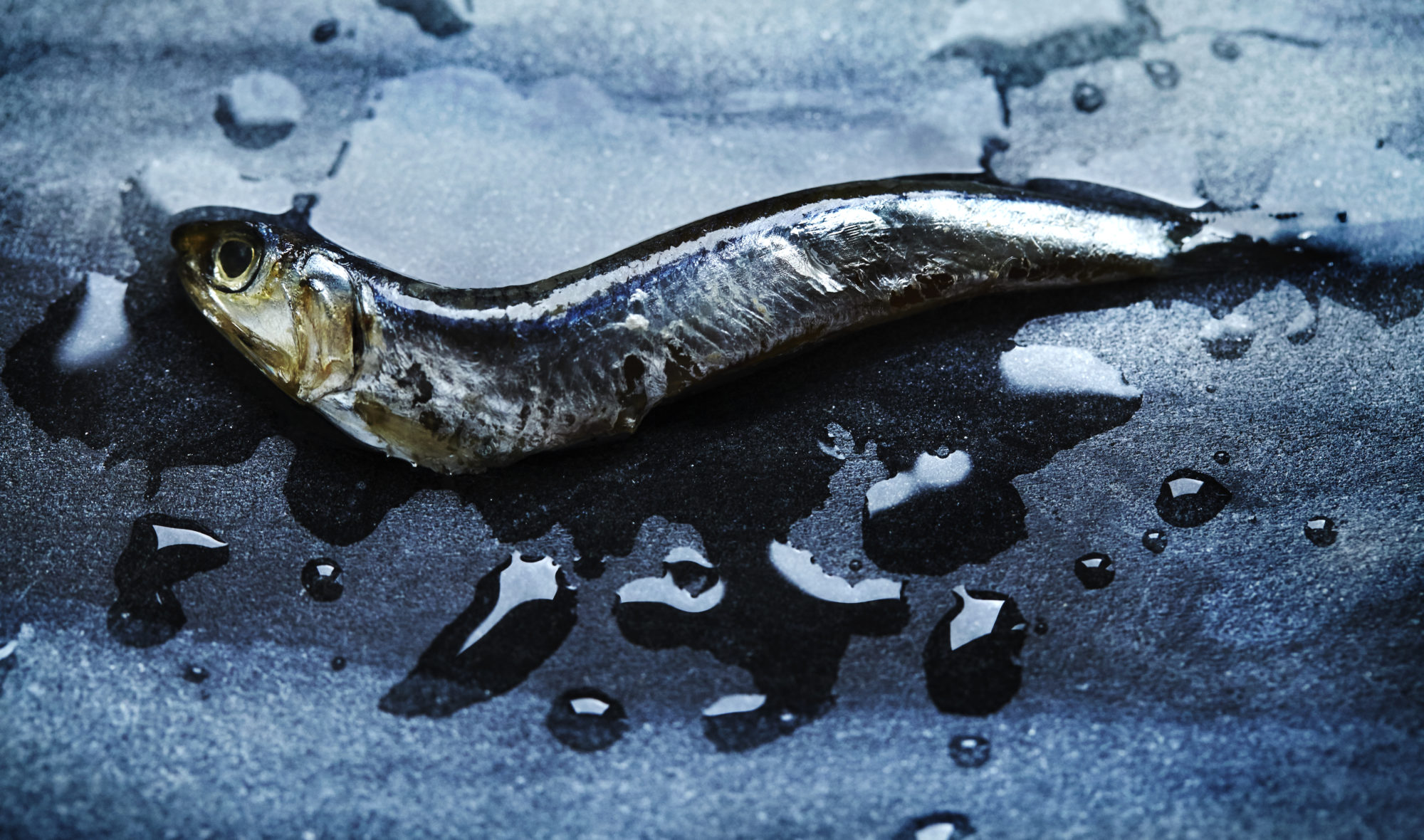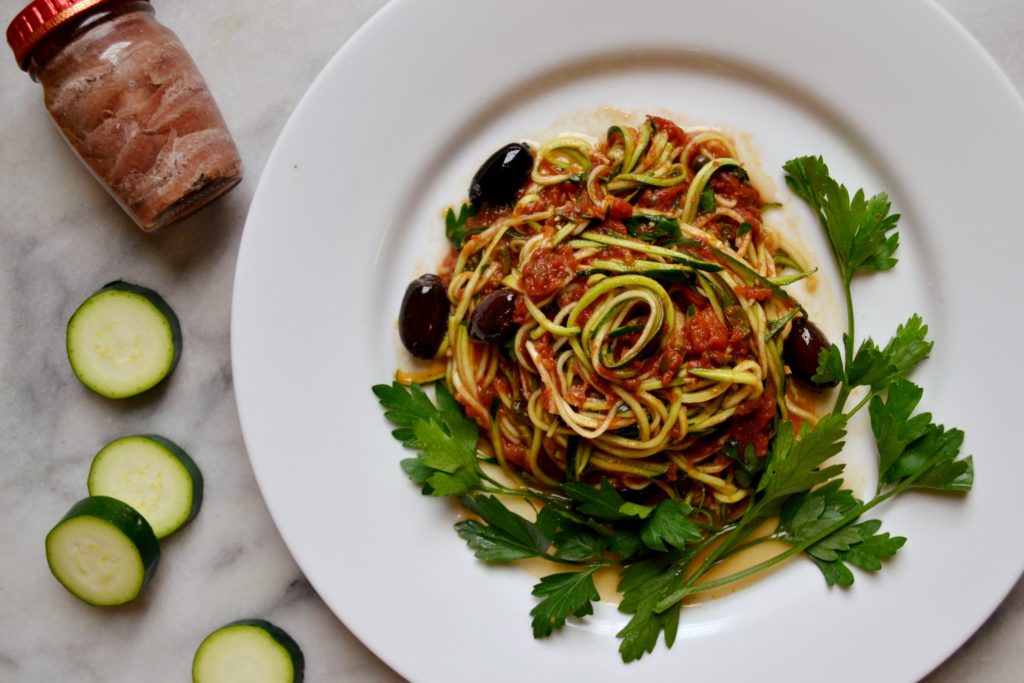
NEW! Lowest Monthly Payment Plan Ever—Master Health Coaching Certification. This week only.

NEW! Lowest Monthly Payment Plan Ever—Level 2 Master Health Coaching Certification.

Small, stinky, and intensely flavorful, anchovies are more than just a polarizing pizza topping. These small, silvery fish are one of the most sustainable seafood choices and are furthermore highly nutritious. Anchovies are high in protein, healthy omega 3 fats, calcium, iron, and zinc. When cured, they are also high in sodium. Although they may be found fresh, anchovies are usually found cured in salt and then are packed in oil or salt, or pureed into a paste. In this form, they have an incredibly concentrated salty, fishy, umami flavor. After eating them, most cats will want to make-out with you. This effect may not transfer to humans.
Polarizing pizza topping opinions since the dawn of…pizza, is a stinky little fish known as the anchovy.
Anchovies are a type of small, oily, salt-water fish. They are abundant in Mediterranean regions but are also found in temperate salt waters around the world.
Low on the food chain (anchovies only eat plankton and other small, recently hatched fish), anchovies are one of the most nutritious, sustainable fishes available.
While anchovies are sometimes available fresh, they are most commonly found cured.
Soon after the anchovies are caught, they are gutted and then packed in large bins heavily layered with salt, where they will be left to cure for six to eight months. This process preserves and tenderizes the fish and creates the rich, salty, and intensely fishy flavor characteristic of anchovies.
After curing, anchovies are packaged either in salt or oil, or pureed into a paste.
It’s at this point that anchovies find their way onto the pizzas of people with particular palates.
Fresh anchovies are small and silvery and full of tiny hair-like bones. They are mild in flavor with a satisfying fatty richness, much like a sardine.
Most anchovies come cured, and then are packed either in salt or oil.
Salt-packed anchovies are typically packed after just the heads and tails have been removed, and therefore may contain traces of silvery scales and also contain bones, which will have softened during the salting process.
Oil-packed anchovies are typically skinned and de-boned, and therefore come in thin little fillets. They are slightly milder in flavor than salt packed anchovies.
Both versions are a rosy-rusty color and intensely flavorful. Cured anchovies have a kicking fishy saltiness and the intense umami flavor characteristic of aged cheeses and cured meats.
Anchovy paste looks a lot like pâté but tastes like a million oceans concentrated into one tube.
A portion of five anchovy fillets (canned in oil and drained; about 20g) has 42 calories, 5.8g protein, 1.9g of fat, and no carbohydrates, fiber, or sugar. Anchovies are an excellent source of calcium, iron, and zinc. In their cured form, they are also high in sodium.
Anchovies are a notably rich source of omega 3 fats. Omega 3s help to decrease inflammation and maintain the health of all the cells in the body, especially the fatty tissues of the eyes, brain, and nervous system.
Although fresh, frozen, and desiccated anchovies are available, the anchovies you will most likely find at your grocery store, health food store, or gourmet food store will come in one of three ways: packed in oil, packed in salt, or in a paste. Oil or salt packed anchovies typically come in either a can or a jar, and anchovy paste usually comes in a tube, not unlike a tube of toothpaste.
As with most packaged foods, the ingredients list will tell you the most about the quality of the product. Anchovy products should contain little more than anchovies, salt, oil, and in the case of anchovy paste, sometimes vinegar.
Cured anchovy products in cans, jars, or tubes will likely have a long shelf-life, due to the preserving quality of salt. Make note of the expiration date on the package, and consume before it passes.
Before they are opened, many anchovy products are quite shelf-stable, unless otherwise specified on the label. After they are opened, keep anchovies covered in either salt or oil in an airtight container in the fridge, where they will stay good for up to two months.
However, always refer to the instructions on the package, as shelf-life and storing instructions may vary.
Cured anchovies can be eaten straight out of the jar / can / tube.
Anchovies are also lovely layered on crusty bread with butter, or on a plain cracker. As mentioned, they are favored by some on pizza, or can be mashed into salad dressings or tomato sauces for added savoriness.
If you have cats, prepare for a stampede when you open your container.

This classic Italian dish gets a twist with vegetables disguised as pasta! Anchovies melt into this chunky sauce and provide a rich, umami flavor that even anchovy naysayers will love.
Prep Time: 25 minutes Cook Time: 60 minutes Yield: 2-3 servings
Begin by preparing the zucchini noodles. To turn zucchini into noodles, use a vegetable spiralizer, a mandolin, or a simple vegetable peeler and cut the zucchini into thin ribbons. Set aside.
Add olive oil to a large pan over medium-high heat and bring to a sizzle. Add garlic, and stir until fragrant, about two minutes. Then, add anchovies, stewed tomatoes, red pepper flakes, capers, and olives, and stir. Bring to a light boil, and then reduce heat to a simmer. Simmer for about 30-45 minutes, stirring intermittently, until a lot of the liquid has evaporated and you are left with a thick, chunky sauce.
Add this sauce to your zucchini “noodles” and toss to cover. Season to taste with salt, cracked pepper, and if desired, freshly grated Parmesan cheese.
Serve immediately while hot. Enjoy!
Precision Nutrition’s Encyclopedia of Food expands every single month as we highlight new foods and showcase beautiful food photography. If you’d like to stay up to date, simply click this link. From there, we’ll send you a FREE copy of our recipe book. We’ll also let you know when new and delicious foods are added to the site.
Small, stinky, and intensely flavorful, anchovies are more than just a polarizing pizza topping. These small, silvery fish are one of the most sustainable seafood choices and are furthermore highly nutritious. Anchovies are high in protein, healthy omega 3 fats, calcium, iron, and zinc. When cured, they are also high in sodium. Although they may be found fresh, anchovies are usually found cured in salt and then are packed in oil or salt, or pureed into a paste. In this form, they have an incredibly concentrated salty, fishy, umami flavor. After eating them, most cats will want to make-out with you. This effect may not transfer to humans.